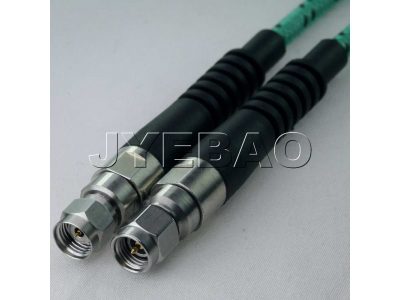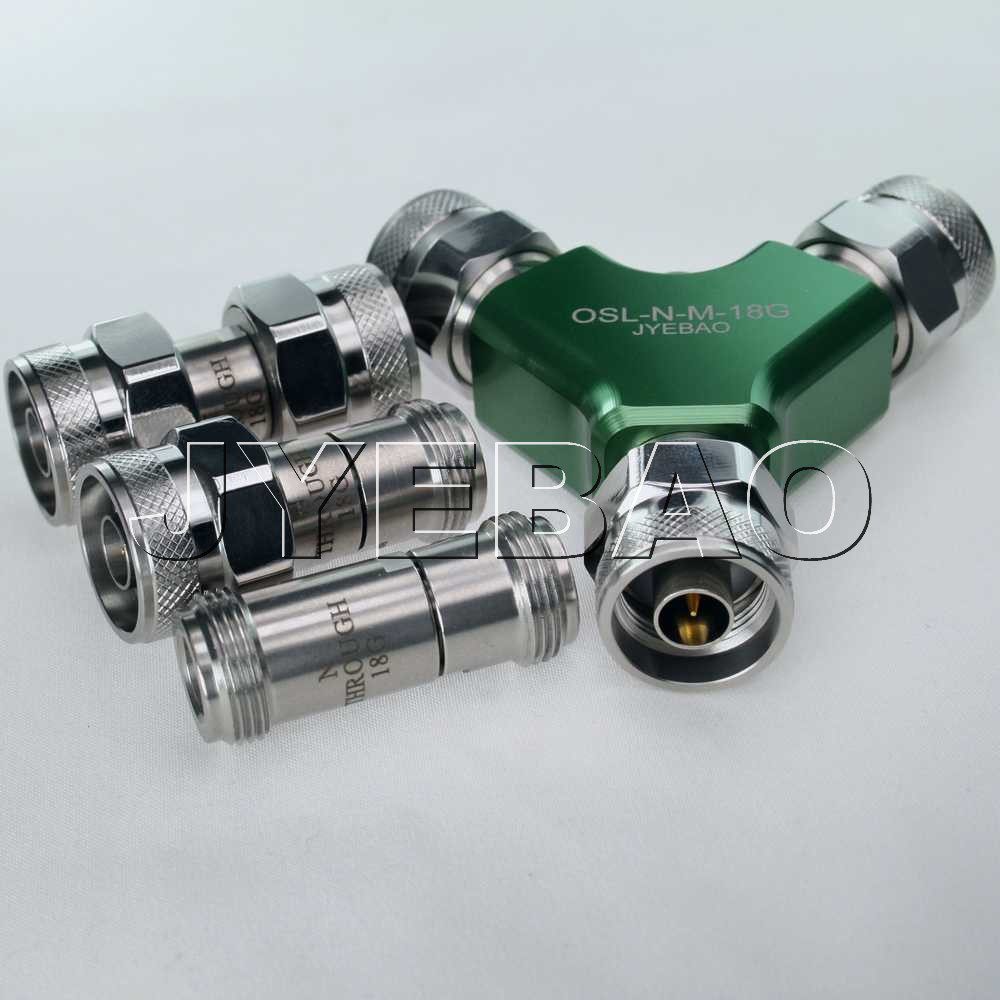Test cables and calibration kits
RF cables and antennae play a major role in relaying RF signals and providing internet connection to homes, offices, and industrial areas. The performance of these RF cables is important as small changes in their performance can affect the quality of the Wi-Fi/internet access. Therefore, systems engineers and technicians conduct routine checks, where they evaluate cable performance and also identify any faults in the system, the location of such faults, and their causes. To examine these aspects the engineers use test RF cables, calibration kits, and test equipment such as vector network analysers (VNA).
Jyebao manufactures a variety of phase-stable test cables and VNA cables that come in different lengths, geometry, and connectors type. Jyebao also produces different combinations of open, short, load, and through (SOLT) calibration kits. These high-quality RF test cables and calibration kits ensure you get an accurate measurement while examining your device. Here at the RFShop, We have a team of experts who can help you find the ideal RF test cable or calibration kits suited to your application. so click the chat button and let’s talk Jyebao test cables!.
Actors you need to examine when buying an RF test cable
There are many factors that you need to examine when buying an RF test cable, a few of those are explained below.
Insertion loss:
Insertion loss is defined as the measure of the power absorbed by the transmission line, such as the RF test cable, in the direction of the signal path. Insertion loss could be contributed by a variety of factors, such as cable length, type of cable, and operating frequency. Higher insertion loss of the cable can result in inaccurate system performance. A good RF test cable should ideally have an insertion loss of less than 2dB across its entire frequency range.
Phase stability:
Phase stability is one of the important parameters that affect the accuracy of the test system, especially in high phase-sensitive RF systems and microwave equipment. Phase stability is an essential feature in test cables as it ensures good phase tracking with change in temperature and improves antenna gain for better system performance and accuracy. In an ideal test RF cable, phase difference should not be affected due to the change in position of the cable, following calibration. An RF test cable should ideally have phase stability of plus or minus one or two degrees.
Frequency range:
The frequency range of the RF test cable determines the robustness of a test system. Most RF cables are designed to operate within a certain frequency and do not usually operate beyond this defined frequency range. When examining your device under test (DUT) (i.e. your application), such as antenna, you would need to ensure that the RF test cables are well-matched with the frequency of your DUT as any discrepancy could result in reduced measurement accuracy and repeatability of the test.
Impedance:
Impedance is defined as the overall opposition to a current flowing through a circuit or part of a circuit. There are various factors that affect impedance such as conducting material and dielectric and geometry of the material. RF test cables are available at 50 ohm and at 75 ohm, with regards to impedance. The 50 ohm RF test cables are used in high precision RF test equipment and high-frequency application. While, the 50 ohm RF test cable is used in domestic video application, digital audio, and TV network distribution. You need to ensure that your using the appropriate RF test cable for your DUT to obtain accurate and reliable measurements.
Return loss/VSWR:
When you are testing a system, standing waves are created due to impedance mismatch between the RF test cable and the DUT. Voltage standing wave ratio (VSWR) is a ratio of input impedance to the characteristic impedance as a result of signal loss caused by reflection. While return loss is the measure of these standing waves (i.e. the reflected energy) and is measured in terms of decibels. A higher return loss usually indicates better quality of the RF test cable.
Attenuation loss:
Another parameter that determines the effectiveness of an RF cable is the attenuation loss. Attenuation refers to the loss of signal due to cable loss or attenuation. When purchasing test cables it is advised you look for a low loss RF test cable for measurement.
Shielding effectiveness :
In an RF test cable, the inner conductor is either a solid metallic wire or a braided wire that is usually made up of copper to conduct the RF signals. RF cables, especially those having braided metallic core, leakage of signals could occur due to electromagnetic interference (EMI) and RF interference (RFI). The primary reason for this is the geometry of the braided cable as it is conformal and can bend easily. Shielding effectiveness is the measure of immunity of RF test cable from EMI and RFI. Hence, it is important to have a well-shielded cable, especially if you are examining the DUT in a noisy RF environment.
Power handling:
Another important factor in choosing the appropriate RF test cable is ensuring your buy a cable that suits the power requirement of your DUT as it ensures safety and efficiency. Depending on the power they utilise RF applications can be divided into low power, medium power, and high power. Jyebao manufactures a variety of RF test cables that have been carefully designed to suit the power needs of your DUT.
Rugged outer jacket:
A rugged outer jacket is an important feature in an RF test cable as it ensures protection of the cable and ultimately impacts cable performance. RF test cables with an outer rugged jacket are UV resistant, operated under different temperature conditions. They have torque-resistant armor, corrosion-resistant conductor plating, reliable stainless steel body, and are mechanically sturdy,
Temperature stability:
When buying an RF cable it is important to find to ensure that the test cable that your buying is compatible with the DUT. Most cables perform well under both high and low temperatures; however, it is important to ensure that these cables function well under the test conditions and don’t introduce any errors in measurements taken. Especially, when testing high-temperature applications suitable cables to withstand these temperatures must be used.
Physical dimensions:
This is another important factor that you need to look out for when buying a test cable. Parameters such as the geometry of the test cable, type of connector used, the polarity, and the gender of the connector, should be carefully examined and chosen to suit your DUT.

VNA RF test cable
Calibration kits
Routine tests to examine the performance of your application is important as it ensures consistent performance. These tests are carried out using devices like VNA and RF test cables connected to your applications. VNA runs calibration tests on the application using a mathematical technique called vector error correction. Performing calibration tests is important to ensure the accuracy of the measurements taken and in turn quantifying the performance of your application. Running calibration tests removes measurement uncertainty, which are systematic errors.
To correct these systematic errors one basic types of calibrations test that could be performed is SOLT (short, open, load, through). In the SOLT calibration kits, the test port is induvidually connected to a known shorted termination, open termination, and load termination, and measurements are noted down. Additionally, a known through connection is also established between two test ports by connecting the ports together.
The calibrations measurements obtained from these tests determine the directivity, source match, and reflection tracking of each test port. The through connection allows you to measure forward and reverse tracking as well as load match to each port, given that the match at a given port is not constant.
Jyebao manufactures a variety of these SOLT calibration kits, with different types of connectors to suit your applications. These SOLT kits have an impedance of 50 ohm and are designed to operate at different frequencies ranging between 4 to 50 GHz. Induvidual components of the SOLT calibration kit and different combination of this kits is also available.

SOLT calibration kit
